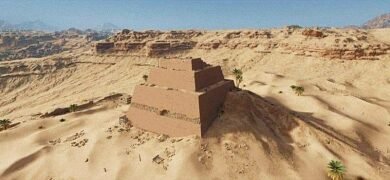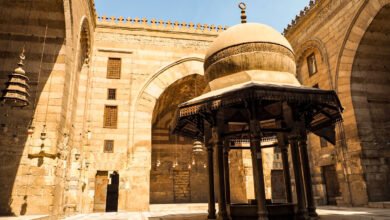Simply This Egypt

Ancient Egypt, civilization that thrived along the Nile River in northeastern Africa for more than 3,000 years, from about 3300 bc to 30 bc. It was the longest-lived civilization of the ancient world. Geographically, the term ancient Egypt indicates the territory where the ancient Egyptians lived in the valley and delta of the Nile. Culturally, it refers to the ways ancient Egyptians spoke, worshiped, understood the nature of the physical world, organized their government, made their livings, entertained themselves, and related to others who were not Egyptian.
The Nile River, which formed the focus of ancient Egyptian civilization, originates in the highlands of East Africa and flows northward throughout the length of what are now Sudan and Egypt. Northwest of modern-day Cairo, it branches out to form a broad delta, through which it empties into the Mediterranean Sea. Because of seasonal rains farther south in Africa, the Nile overflowed its banks in Egypt every year. When the floodwaters receded, a rich black soil covered the floodplain. This natural phenomenon and its effects on the environment enabled the ancient Egyptians to develop a successful economy based on agriculture.

Sphinx, in Greek mythology, monster with the head and breasts of a woman, the body of a lion, and the wings of a bird. Lying crouched on a rock, she accosted all who were about to enter the city of Thebes by asking them a riddle, “What is it that has four feet in the morning, two at noon, and three at night?” If they could not solve the riddle, she killed them. When the hero Oedipus solved the riddle by answering, “Man, who crawls on four limbs as a baby, walks upright on two as an adult, and walks with the aid of a stick in old age,” the sphinx killed herself. For ridding them of this terrible monster, the Thebans made Oedipus their king.

In ancient Egypt, sphinxes were statues representing deities, with the body of a lion and the head of some other animal or of man, frequently a likeness of the king. The most famous of all Egyptian sphinxes is the Great Sphinx of Giza, near the pyramids. Dating from around 2500 bc, the Great Sphinx is about 20 m (about 66 ft) high and about 73 m (about 240 ft) long.
Pyramids (Egypt), large structures with four triangular sides that meet in a point at the top, directly over the center of the pyramid’s square base. Ancient peoples in several parts of the world built pyramids, but the
Egyptians constructed the biggest and most famous pyramids, with which this article deals
.The ancient Egyptians built more than 90 royal pyramids, from about 2630 bc until about 1530 bc. During that time, the pyramid form evolved from a series of stepped terraces that resembled the layers of a wedding cake to the better-known, sloped pyramidal shape. The first pyramid, the Step Pyramid at Şaqqārah, was constructed during the reign of King Djoser (2630 bc-2611 bc). The largest pyramid is the one built for King Khufu, at the site of modern Giza. Khufu’s pyramid, known as the Great Pyramid, is the only one of the Seven Wonders of the World that still survives.

Aswān High Dam, dam across the Nile River in southern Egypt, located near the city of Aswān. The dam impounds Lake Nasser, one of the largest reservoirs in the world. The High Dam has an embankment 111 m (365 ft) high that extends 3,600 m (11,800 ft) across the river. Named in honor of Egyptian president Gamal Abdel Nasser, Lake Nasser covers an area more than 480 km (300 mi) long and 16 km (10 mi) wide. The water is used to irrigate farmland and has enabled Egypt to double its agricultural production since the dam was completed. During the rainy season the dam also controls the yearly flooding of the Nile.

Construction on the mammoth dam began in 1960, and the total cost was estimated at more than $1 billion. One-third of the cost was underwritten by the Union of Soviet Socialist Republics (USSR), and 400 Soviet technicians were employed. By mid-1968 construction was essentially completed. The last of the 12 Soviet-built turbines was installed in 1970, and the dam was formally inaugurated in 1971. The dam has a generating capacity of 2,100 megawatts of electricity.
Although the Aswan High Dam has provided many benefits to the area, it also has caused problems. The formation of Lake Nasser inundated many villages along the Nile in both Egypt and Sudan, forcing thousands of people to relocate. Farmland along the Nile is becoming less fertile and productive because it no longer receives the fertilizing silt from the river’s floodwaters. Farmers have attempted to use chemical fertilizers instead, but these are not as effective.
The Aswān High Dam is about 6 km (about 4 mi) upstream from the much smaller Aswān Dam, which was completed in 1902. Hydroelectric installations were added to the Aswān Dam in 1960.





